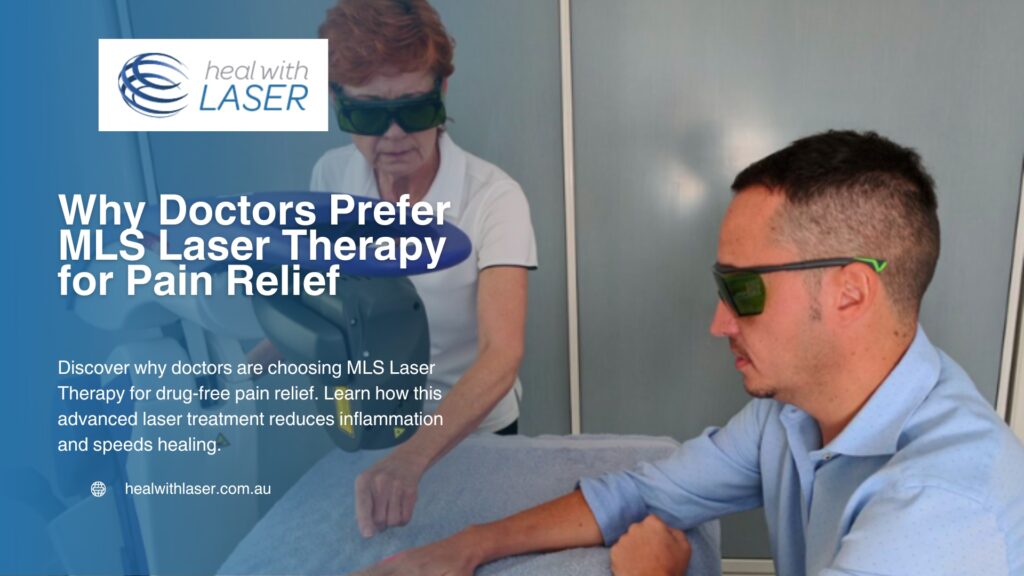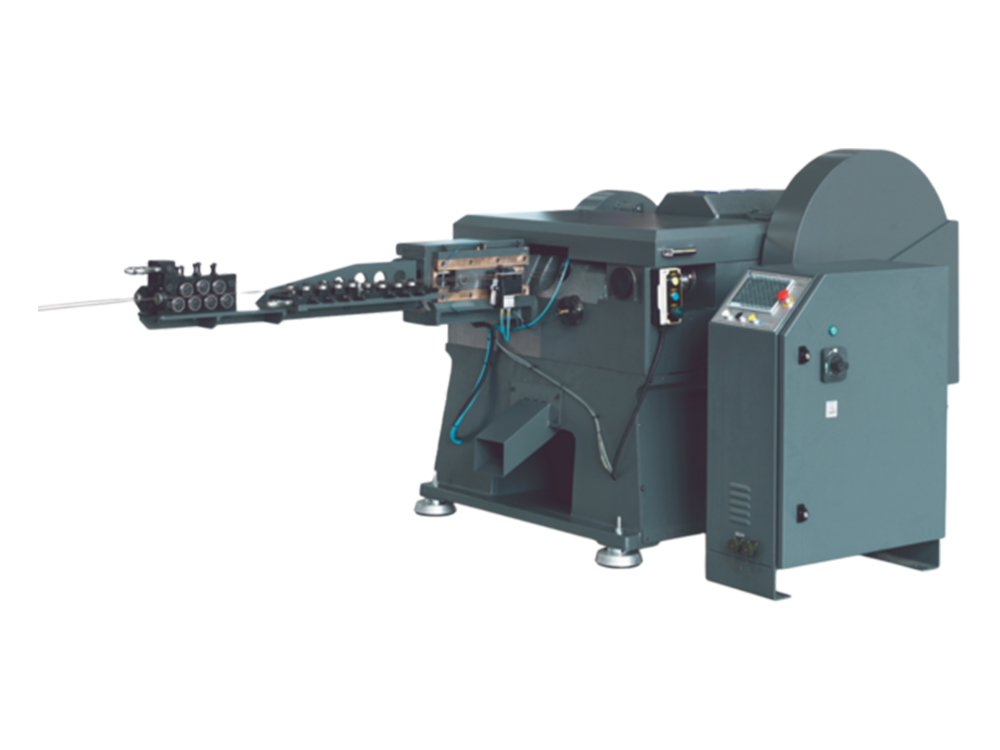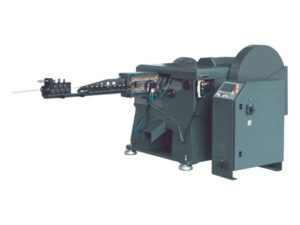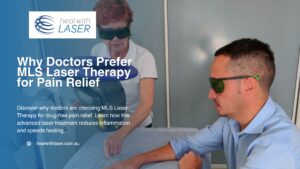If you’ve ever lived with chronic pain, you know how exhausting it can be. The constant discomfort, the frustration of treatments that don’t work, and the worry about long-term medication use; all are overwhelming. Many people feel trapped between painkillers with side effects and invasive procedures that may not guarantee relief. But what if there was another way?
If you’ve ever lived with chronic pain, you know how exhausting it can be. The constant discomfort, the frustration of treatments that don’t work, and the worry about long-term medication use; all are overwhelming. Many people feel trapped between painkillers with side effects and invasive procedures that may not guarantee relief. But what if there was another way?
MLS Laser Therapy is changing the scenario. This innovative, drug-free treatment is helping people find relief without relying on medications or surgery. By using a highly targeted laser beam, this advanced laser therapy system stimulates the body’s natural healing processes, promoting soft tissue repair and reducing inflammation at the source. Unlike traditional laser therapy, MLS Laser Therapy works at a cellular level to restore function and improve patient satisfaction.
Doctors worldwide are increasingly recommending this breakthrough approach for pain management because it provides a non-invasive solution that speeds up recovery and delivers lasting results. In this article, we’ll explore why more healthcare providers are turning to MLS Laser Therapy, how it works, and why it might be the right option for you.

The Science Behind MLS Laser Therapy
MLS Laser Therapy might sound complex, but at its core, it’s a straightforward concept: light energy that promotes healing. The laser beam used in this treatment penetrates deep into damaged tissue, stimulating cellular repair and reducing inflammatory processes.
How MLS Laser Works
Unlike traditional laser therapy, which typically uses a single wavelength, MLS (Multiwave Locked System) technology utilises two synchronised wavelengths that work together for greater pain reduction and soft tissue repair.
- One wavelength targets reducing inflammation and swelling.
- The other wavelength promotes tissue regeneration and accelerates the healing process.
This combination allows MLS Laser Therapy to deliver controlled laser energy to the treated area, addressing pain at its root instead of just masking symptoms.
The Role of the Laser Beam in Healing
The laser beam plays a vital role in stimulating blood flow and increasing oxygen and growth factors in the affected area. This enhances nerve regeneration, supports tissue repair, and decreases nerve sensitivity, which helps relieve chronic pain in conditions like arthritis pain, ligament injuries, and sports medicine-related issues.
Continuous Emission vs. Pulsed Emission
A key advantage of MLS Laser Therapy is its ability to alternate between continuous emission and pulsed emission, ensuring both immediate pain relief and long-term healing:
- Continuous emission: Works on reducing inflammation and improving lymphatic drainage.
- Pulsed emission: Stimulates nerve cells, supports nerve regeneration, and encourages cell proliferation for tissue repair.
This balance ensures that MLS Laser Therapy delivers analgesic effects while supporting the body’s natural healing processes.
Clinical Trials & Research
Clinical trials have shown that MLS Laser Therapy provides measurable improvement in pain reduction, tissue regeneration, and patient satisfaction. Studies also indicate that it helps accelerate healing for conditions involving scar tissue, plantar fasciitis, tendonitis wounds, and knee pain.
Healthcare providers are increasingly using MLS Laser Therapy due to its strong clinical outcomes, safety, and effectiveness in treating a wide range of health conditions without the side effects associated with other treatments.
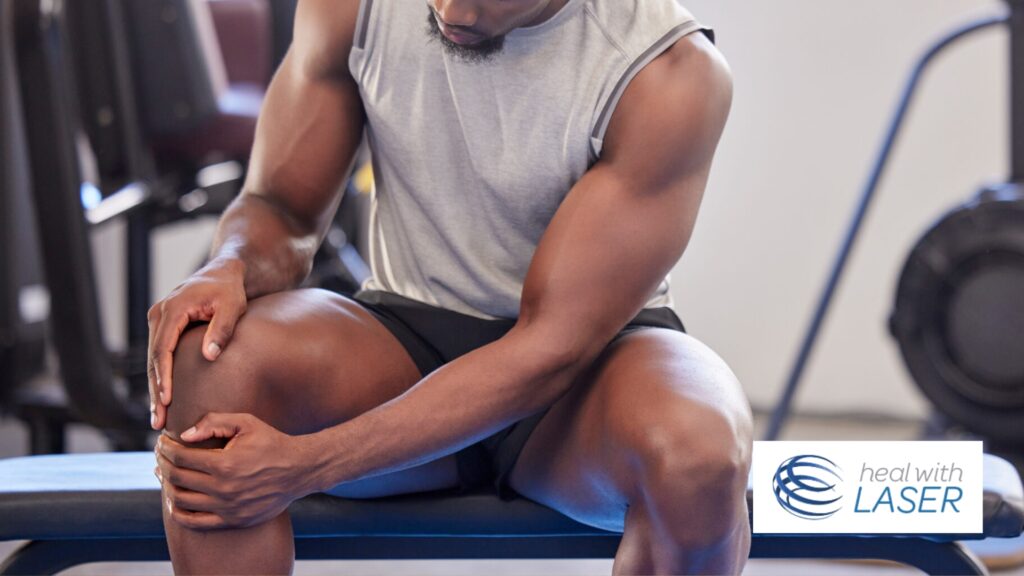
Why Doctors Are Embracing MLS Laser Therapy
For years, doctors have relied on pain medications, injections, and surgery to help patients manage chronic pain. However, these methods often come with significant drawbacks—side effects, long recovery times, and, in some cases, only temporary relief.
As a result, many healthcare providers are turning to MLS Laser Therapy as a non-invasive solution that delivers long-lasting pain reduction and promotes soft tissue repair.
A Drug-Free Treatment Option
One of the biggest reasons MLS Laser Therapy is gaining traction in pain management is its ability to provide relief without medications. Unlike opioids and anti-inflammatory drugs, which only mask pain and can lead to dependency, this advanced laser therapy system targets the root cause of discomfort by stimulating the body’s natural healing processes.
According to Harvard Health, drug-free pain relief methods like laser therapy can be highly effective for conditions such as arthritis pain, nerve sensitivity, and tissue damage, making them a preferred choice for both doctors and patients.
Faster Healing Process
One of the major benefits of MLS Laser Therapy is its ability to decrease nerve sensitivity, improve blood flow, and enhance tissue repair. Increasing oxygen and growth factors in the treated area help repair damaged tissue while preventing the formation of excessive scar tissue.
Research in the Journal of Clinical Medicine shows that laser therapy helps cells grow and speeds up nerve healing. This makes it useful for sports injuries, surgery recovery, and ligament damage.
FDA Clearance & Clinical Validation
Doctors trust MLS Laser Therapy because it is FDA-cleared and supported by clinical research. Studies have shown that this multiwave locked system effectively reduces inflammatory conditions while delivering analgesic effects simultaneously.
Unlike traditional laser therapy, which may only provide temporary relief, MLS Laser Therapy ensures a greater improvement in clinical outcomes for long-term pain relief.
Comparison to Other Treatments
When compared to other treatments such as cortisone injections or surgery, MLS Laser Therapy stands out due to its:
- Non-invasive nature – No needles, incisions, or downtime.
- Minimal risk – No reported thermal damage or side effects.
- Long-term effectiveness – Works at the cellular level to evaluate therapeutic effects and encourage tissue regeneration.
Many healthcare providers are now integrating MLS Laser Therapy into their patient care plans because it not only relieves pain but also supports the healing process for a wide range of conditions.
Who Can Benefit from MLS Laser Therapy
Millions of people struggle with chronic pain, sports injuries, and degenerative conditions that affect their mobility and quality of life. While traditional treatments such as medications and physical therapy can provide relief, they may not always address the underlying cause of pain. MLS Laser Therapy is emerging as an effective option for those seeking long-term pain reduction and faster recovery.
Common Conditions Treated
Healthcare providers are using MLS Laser Therapy to manage a wide range of conditions, including:
- Arthritis pain – Reduces joint inflammation and improves mobility.
- Neuropathy and nerve damage – Helps decrease nerve sensitivity and support nerve regeneration.
- Sports injuries – Accelerates the healing process for ligament injuries, tendonitis, and muscle strains.
- Post-surgical recovery – Enhances blood flow and reduces scar tissue formation for quicker rehabilitation.
- Back and neck pain – Targets deep tissue damage to relieve discomfort and restore movement.
According to Johns Hopkins Medicine, chronic pain affects millions of people worldwide, limiting their ability to work, exercise, and perform daily activities. MLS Laser Therapy provides an alternative to traditional treatments, allowing patients to recover without relying on invasive procedures or long-term medication use.
What Healthcare Providers Are Saying
Doctors and specialists in pain management, sports medicine, and orthopaedics are increasingly incorporating MLS Laser Therapy into their treatment plans. Research published in the National Library of Medicine highlights its ability to reduce inflammation, promote soft tissue repair, and improve patient outcomes.
As more patients seek drug-free pain relief options, MLS Laser Therapy continues to gain traction as a safe and effective solution for managing a variety of health conditions.
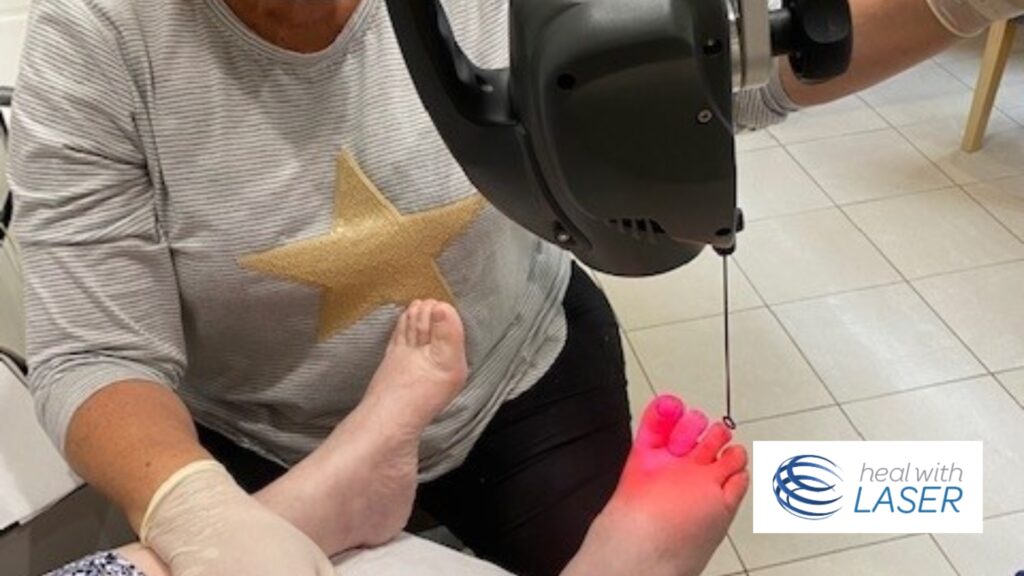
Addressing Patient Concerns: What You Need to Know
If you are considering MLS Laser Therapy, you probably have questions. Is it safe? Will it work for your condition? How much does it cost? Understanding how this treatment works can help you make an informed decision about whether it is the right option for your pain management needs.
Is It Safe?
MLS Laser Therapy is an FDA-cleared treatment with no known side effects. Unlike pain medications that can cause dependency or surgery that requires long recovery times, this therapy is completely non-invasive. Patients typically experience a gentle warming sensation during treatment, but there is no discomfort. Research from the American Academy of Pain Medicine shows that laser therapy can effectively treat chronic pain conditions without the risks associated with traditional methods.
How Many Sessions Will I Need?
The number of sessions required depends on the severity of your condition. Many patients begin to notice improvements after just a few treatments, while others with more complex conditions may need six to ten sessions for optimal results. The therapy is cumulative, meaning that each session builds on the last to enhance tissue repair and pain relief.
Is It Covered by Insurance?
At this time, most insurance providers do not cover MLS Laser Therapy, as it is still considered an emerging technology in pain management. However, many clinics offer financing options or package deals to make treatment more affordable. Patients should check with their healthcare provider to discuss costs and available payment plans.
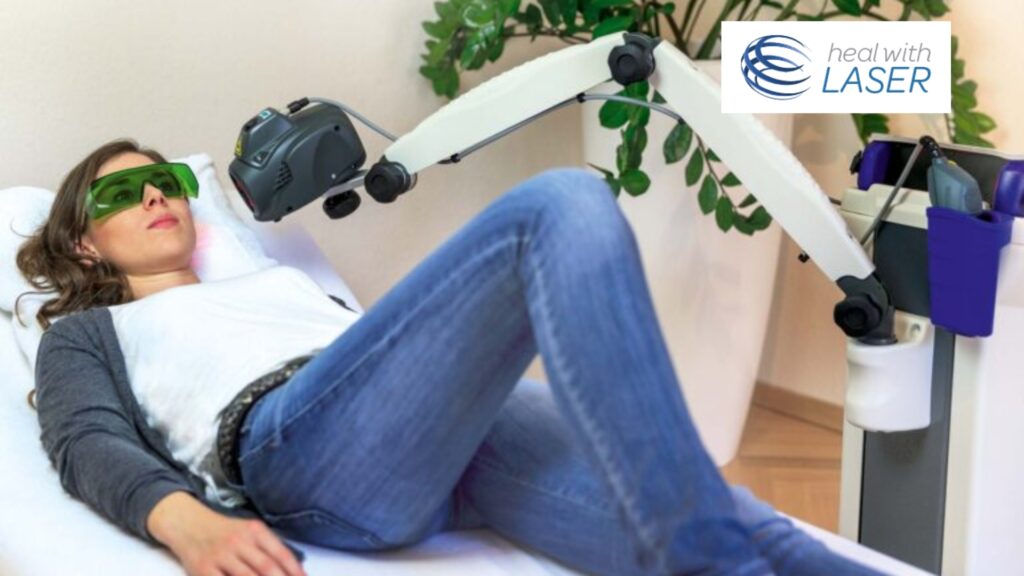
How Does It Compare to Other Treatments?
MLS Laser Therapy offers a distinct advantage over many traditional pain relief methods. Unlike cortisone injections or prescription painkillers, it works at the cellular level to promote healing rather than just masking symptoms. Compared to laser acupuncture, which focuses on energy points, MLS Laser Therapy directly targets damaged tissue to deliver controlled laser energy for faster, more effective healing.
By addressing the root cause of pain, MLS Laser Therapy provides long-term relief without the need for invasive procedures or medication. Many patients report significant improvement in mobility, reduced inflammation, and an overall better quality of life after completing their treatment sessions.
The Future of Pain Management: Will MLS Laser Therapy Become the Standard?
Advancements in medical technology are continuously reshaping the way pain is treated. As more patients and healthcare providers seek non-invasive alternatives to surgery and medication, MLS Laser Therapy is emerging as a leading solution in pain management. Its ability to deliver controlled laser energy, reduce inflammation, and accelerate tissue repair has positioned it as a viable long-term option for chronic pain sufferers.
Advancements in Medical Laser Technology
The growing success of MLS Laser Therapy is largely due to its ability to combine multiple therapeutic wavelengths into a single treatment. Unlike traditional laser therapy, which often provides only short-term relief, this technology works at a deeper level to stimulate nerve regeneration, improve blood flow, and enhance the body’s natural healing processes. Research published in the Journal of Pain Research has shown that laser therapy can significantly increase pain reduction and improve clinical outcomes for patients suffering from various conditions.
Growing Adoption by Healthcare Providers
Many pain management specialists, sports medicine practitioners, and rehabilitation clinics are incorporating MLS Laser Therapy into their treatment plans. Its ability to treat a wide range of conditions, from arthritis pain to ligament injuries, makes it a valuable tool in modern healthcare. As more clinical trials continue to evaluate therapeutic effects, the demand for non-invasive pain management solutions is expected to rise.
The Role of Clinical Trials in Expanding Use
Ongoing research and clinical trials are essential in validating the effectiveness of MLS Laser Therapy. Studies continue to explore its impact on inflammatory conditions, nerve sensitivity, and tissue regeneration. With extensive research supporting its benefits, many experts believe that MLS Laser Therapy could soon become a standard treatment for chronic pain.
As more patients experience the benefits of this advanced laser therapy system, the future of pain management may shift away from medication dependency and invasive procedures. With its ability to promote healing at the cellular level, MLS Laser Therapy is paving the way for a new era of drug-free pain relief.
A New Era in Pain Relief
The demand for non-invasive, drug-free pain management solutions continues to grow, and MLS Laser Therapy is at the forefront of this shift.
By harnessing the power of laser energy to stimulate tissue repair, reduce inflammation, and accelerate healing, it offers an effective alternative to traditional pain relief methods.
For those suffering from chronic pain, arthritis, sports injuries, or post-surgical recovery, MLS Laser Therapy provides a treatment option that goes beyond masking symptoms.
With increasing clinical validation and adoption by healthcare providers, it is becoming a preferred choice for patients seeking long-term relief without the risks of medication or surgery.
If you are looking for a proven solution to improve mobility, reduce discomfort, and support natural healing, MLS Laser Therapy may be the right choice.
Learn more about this innovative treatment at Heal with Laser and explore how it can help you regain control over your health and well-being.

